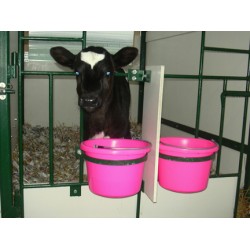Vet Graham Shepherd from Lancashire-based G Shepherd Animal Health, was featured in UK magazine British Dairying offering some timely advice on vitamin and mineral nutrition on dairy units.
First Steps
Getting the right balance of vitamins and minerals is very important for maintaining a healthy and fertile dairy herd and maximising performance.
However, before making any decision on how best to supplement the diet, it is worth checking that the forage and concentrate element of the ration are providing sufficient energy and protein, in an appetising and rumen-friendly form.
Silage sampling for energy, protein and fermentation factors is routine on most units, but it is also a good idea to have samples of grazed grass analysed every few years, to provide more information on mineral levels specific to the farm. Ideally, fields with different types of grass, soils and management policies should be sampled separately.
While soil sampling is not necessary in direct relation to cow nutrition, it is important for grass growth and quality.
Equally important is the requirement to provide fresh, clean water at all times. Many producers have installed boreholes to reduce utility bills and while most supplies are suitable, there may be issues to address.
High levels of manganese and iron are the two that are most commonly detected; these will interact with selenium and copper respectively, although special filters are available, to remove unwanted elements. Excess salt in borehole water can also affect cow health, especially during the dry period, if a DCAB diet is being fed.
Interpreted correctly, blood and tissue sampling from your cattle will offer valuable information on the nutrients which are readily available to the cow and results should always be discussed with the farm vet and the nutritionist. Once the ‘mineral master plan’ is in place, then it is prudent to continue monitoring the herd.
Any serious health problems, particularly those proving hard to diagnose, can be investigated further by using blood, milk or liver biopsy, depending on the symptoms.
Delivery Systems
Vitamins and minerals added to feed can be the most practical solution where a TMR is fed, although quantities must be accurate and the feed mixed well. Relying on supplements included in a proprietary concentrate ration is not recommended, as the ingredients and quantities may fall short of individual herd requirements.
Boluses are suitable for many systems and offer the certainty that each cow has received its nutrient allocation, with the glass-based or ‘leaching-type’ products usually the most reliable. Boluses only deliver trace elements, so additional supplementation will be necessary for the macro-minerals (calcium, phosphorus, magnesium and salt).
Water dosing systems which add supplements to the water supply are also a favourable option, as long as the fact that grazing cows tend to drink lower volumes of water on wet days is taken into account. However, some systems will vary the dilution, according to intakes.
Pasture dressings can be a good way of delivering calcium and magnesium, while mineral buckets/licks are also convenient for cows at grass, but intakes can vary widely between individuals. Drenches offer a quick fix solution to address specific needs, but they are labour intensive, unless they are timed to coincide with routine treatments.
Common Deficiencies
●Iodine – A lack of iodine in pregnant cattle produces stillbirths and weak calves. Supplementation is vital on brassica crops and iodine deficiency can also occur at grass. Suspect cases should be sent for post-mortem.
●Selenium – A deficiency in calves will lead to white muscle disease, which causes degeneration of the cardiac muscle and kills within 2-3 days of birth. This disease is rare nowadays and only found on units where home-grown forages are incorrectly balanced. Excess selenium is toxic.
●Vitamin E – Levels are satisfactory in modern diets, with the exception of rations using acid-preserved grain, as the treatment removes vitamin E. Selenium and vitamin E work together to clean up the calf bed after calving and both are linked to a healthy immune system.
●Salt –a vital element of the diet, as it is involved in the transportation of nutrients around the body. Diets which include high levels of wholecrop cereals and maize silage are generally low in salt, but the deficiency is easily rectified by adding salt to the ration or providing rock salt licks.
Other deficiencies/imbalances
Cases of milk fever and staggers are well-documented. Calcium is vital for muscular activity and for healthy gut and heart function, while phosphorus is needed for energy metabolism. Magnesium is involved in nerve function and facilitates the absorption of calcium.
Common Excesses
●Copper
Sudden deaths in dairy cows due to copper poisoning have recently been linked to genetic susceptibility and cases can be confirmed by post-mortem.
After withdrawing mineral supplementation, it may help to increase dietary sulphur and molybdenum, as these will slow down the release of copper.
Specialist advice should be taken if copper poisoning is suspected.
If you need any more information on cow health problems, click here otherwise, check out our extensive range of high quality, reputable Cattle Health Products.







